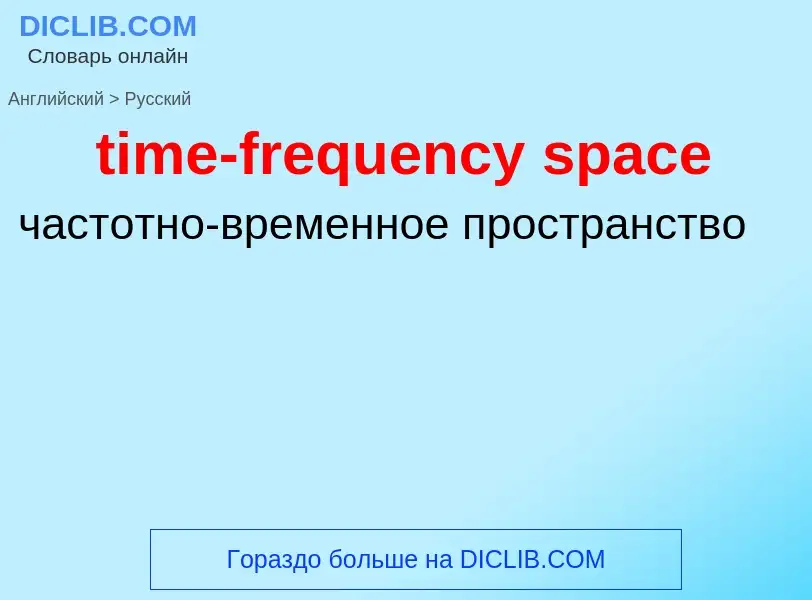Vertaling en analyse van woorden door kunstmatige intelligentie ChatGPT
Op deze pagina kunt u een gedetailleerde analyse krijgen van een woord of zin, geproduceerd met behulp van de beste kunstmatige intelligentietechnologie tot nu toe:
- hoe het woord wordt gebruikt
- gebruiksfrequentie
- het wordt vaker gebruikt in mondelinge of schriftelijke toespraken
- opties voor woordvertaling
- Gebruiksvoorbeelden (meerdere zinnen met vertaling)
- etymologie
time-frequency space - vertaling naar russisch
[speiʃiəu'temp(ə)rəl]
прилагательное
общая лексика
пространственно-временной
математика
пространственноподобный
Смотрите также
Definitie
Wikipedia
A time–frequency representation (TFR) is a view of a signal (taken to be a function of time) represented over both time and frequency. Time–frequency analysis means analysis into the time–frequency domain provided by a TFR. This is achieved by using a formulation often called "Time–Frequency Distribution", abbreviated as TFD.
TFRs are often complex-valued fields over time and frequency, where the modulus of the field represents either amplitude or "energy density" (the concentration of the root mean square over time and frequency), and the argument of the field represents phase.


!['''here''']]. '''here''']].](https://commons.wikimedia.org/wiki/Special:FilePath/Accelerated relativistic observer with horizon.png?width=200)



!['''Click here to animate.''']] '''Click here to animate.''']]](https://commons.wikimedia.org/wiki/Special:FilePath/General relativity time and space distortion frame 1.png?width=200)











